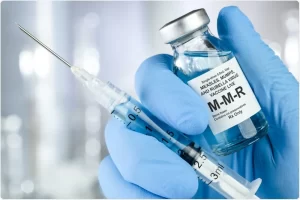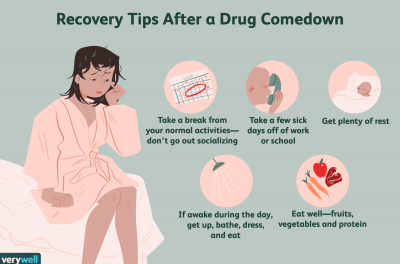The measles, mumps, and rubella (MMR) vaccine is recommended for all children. It protects against three potentially serious illnesses. It is a two-part vaccination, and in most states, you must prove your children have gotten it before they can enter school. If you are an adult who has not had the vaccination or the diseases, you may need the MMR shot, too.
Read the below article to know more about the MMR Vaccine as discussed by Pritish Kumar Halder.

MMR Vaccination
What Are Measles, Mumps, and Rubella?
Measles, mumps, and rubella are viral diseases. All can be very serious.
- Measles starts as a fever, cough, runny nose, conjunctivitis (pinkeye), and a red, pinpoint rash that starts on the face and spreads to the rest of the body. If the virus infects the lungs, it can cause pneumonia. Measles in older children can lead to inflammation of the brain, called encephalitis, which can cause seizures and brain damage.
- The mumps virus usually causes swelling in glands just below the ears, giving the appearance of chipmunk cheeks. Before the vaccine, mumps was the most common cause of both meningitis (inflammation of the lining of the brain and spinal cord) and acquired deafness in the U.S. In men, mumps can infect the testicles, which can lead to infertility.
- Rubella is also known as German measles. It can cause a mild rash on the face, swelling of glands behind the ears, and in some cases, swelling of the small joints and low-grade fever. Most children recover quickly with no lasting effects. But if a pregnant woman gets rubella, it can be devastating to the fetus. If they’re infected during the first trimester of pregnancy, there’s at least a 20% chance their child will have a birth defect such as blindness, deafness, a heart defect, or intellectual disabilities.
Who Should and Shouldn’t Get the MMR Vaccine?
MMR is a two-shot series of vaccines usually given during childhood. A child should receive the first shot when they are between 12-15 months, and the second when they’re between 4-6 years of age.
If you’re not sure if you have had the diseases or the vaccines (prior to 1971 it was given in three separate shots), you can get the MMR vaccine as an adult. Talk to your doctor about it if:
- You were born after 1956. (If you were born during or before 1956, you are presumed to be immune, because many children had the diseases then.)
- You work in a medical facility.
- Also if you are planning to or may become pregnant.

neomycin
You shouldn’t have the shot if:
- Have a severe allergic reaction following the first MMR shot.
- You are allergic to gelatin or neomycin.
- You may be pregnant or are planning to become pregnant in the next 4 weeks. (The vaccine is safe if you are breastfeeding.)
- Your immune system is weak because of cancer drugs, corticosteroids, or AIDS.
What is MMRV Vaccine?

Measles-Mumps-Rubella-MMR Vaccine
MMRV vaccine protects against four diseases: measles, mumps, rubella, and varicella (chickenpox). This vaccine is only licensed for use in children 12 months through 12 years of age.
CDC recommends that children get one dose of MMRV vaccine at 12 through 15 months of age, and the second dose at 4 through 6 years of age. Children can receive the second dose of MMRV vaccine earlier than 4 through 6 years. This second dose of MMRV vaccine can be given 3 months after the first dose. A doctor can help parents decide whether to use this vaccine or MMR vaccine.
MMRV is given by shot and may be given at the same time as other vaccines.
Please see the MMRV Vaccine Information Statement (VIS) for more information about who should not get MMRV vaccine or should wait.
Should You Get Vaccinated After Being Exposed to Measles, Mumps, or Rubella?
If you do not have immunity against measles, mumps, and rubella and are exposed to someone with one of these diseases, talk with your doctor about getting MMR vaccine. It is not harmful to get MMR vaccine after being exposed to measles, mumps, or rubella, and doing so may possibly prevent later disease.
If you get MMR vaccine within 72 hours of initially being exposed to measles, you may get some protection against the disease, or have milder illness. In other cases, you may be given a medicine called immunoglobulin (IG) within six days of being exposed to measles, to provide some protection against the disease, or have milder illness.
Unlike with measles, MMR has not been shown to be effective at preventing mumps or rubella in people already infected with the virus (i.e., post-exposure vaccination is not recommended).
During outbreaks of measles or mumps, everyone without presumptive evidence of immunity should be brought up to date on their MMR vaccination. And some people who are already up to date on their MMR vaccination may be recommended to get an additional dose of MMR for added protection against disease.
MMR Risks and Side Effects
Most people who receive the MMR vaccine have no side effects. Some have fever or minor soreness and redness where they got the shot.
Other possible problems are less common. They include:
- Fever (1 in 5 children)
- Rash (1 in 20)
- Swollen glands (1 in 7)
- Seizure (1 in 3,000)
- Joint pain/stiffness (1 in 100 children; more common in adults, particularly women)
- Low platelet count/bleeding (1 in 30,000)
- Encephalitis (1 in 1 million)
Over the years, some have suggested that the MMR vaccine is linked to autism spectrum disorder. The CDC stands firm that there’s no evidence to support that idea and dozens of studies have concluded there is no connection. The benefits that the vaccine brings in disease prevention far outweigh any potential risks.
Reference
https://www.webmd.com/children/vaccines/measles-mumps-and-rubella-mmr-vaccine










